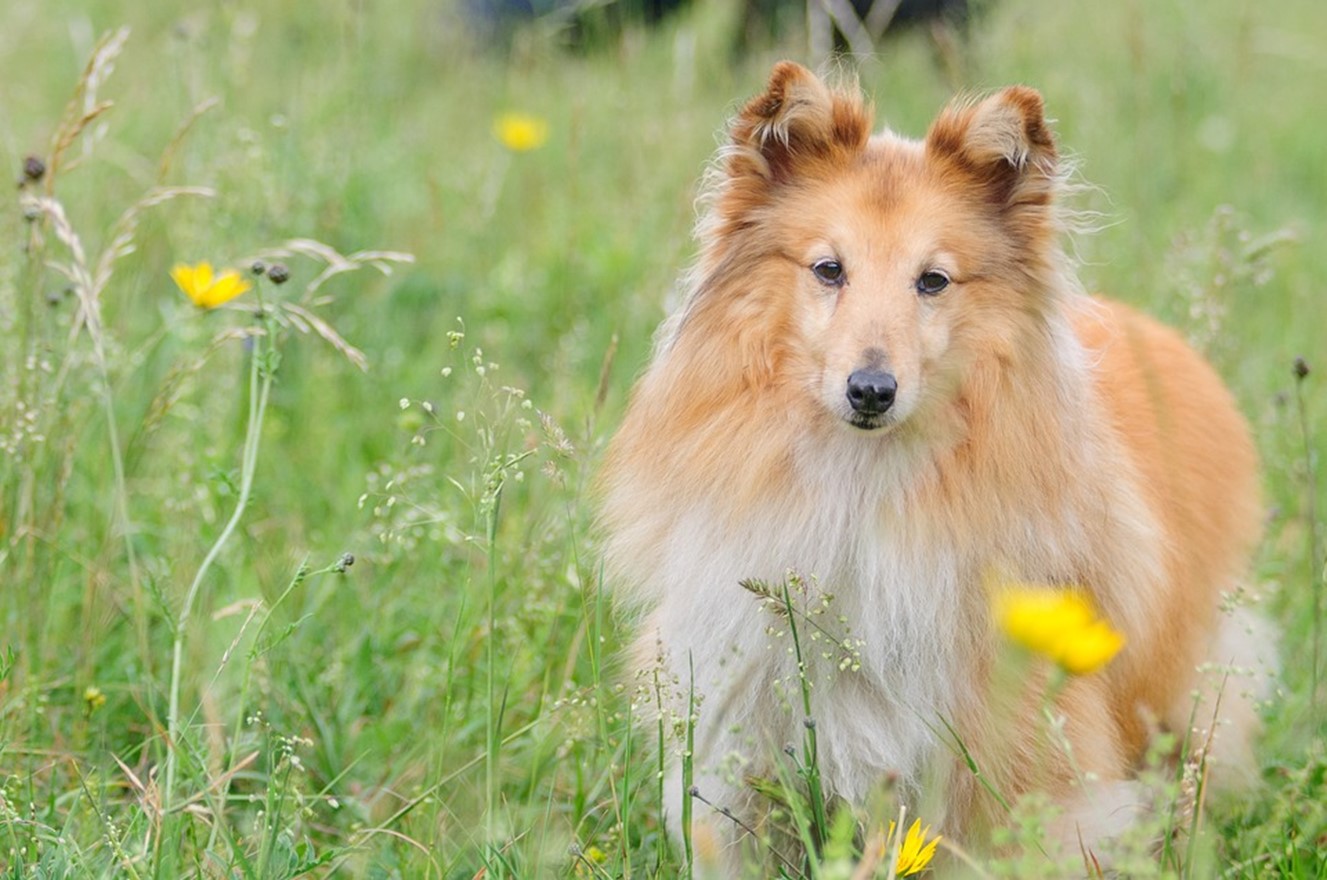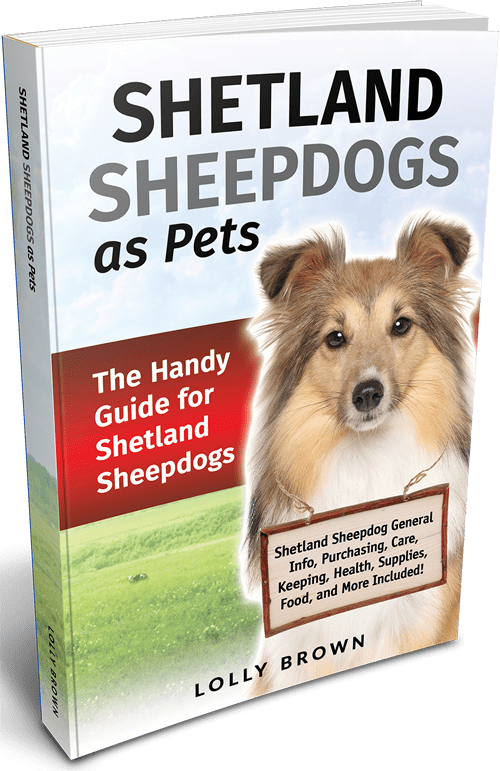CHAPTERS
Navigate to chapter
► Chapter One: Identifying a Sheltie
► Chapter Two: The Sheltie Temperament and Traits
► Chapter Three: Costs of Keeping a Sheltie
► Chapter Four: Sheltie Starter Kit
► Chapter Five: Making Your Sheltie Feel At Home
► Chapter Six: Pet Insurance for Your Sheltie
► Chapter Seven: Virus and Vaccines
Chapter One: Identifying a Sheltie

The Shetland Sheepdog has many similarities with the Rough Collie because they have the same ancestors, the Working Collies of Scotland, and a variety of miniature long-haired Scottish dog breeds. Although the parallels between the Shetland Sheepdog and the Rough Collie is marked, there are still some differences. The Shetland Sheepdog is a small, active, rough-coated, long-haired working dog. It must be sound, athletic, and muscular. The outline should be so balanced that no part appears out of proportion to the whole. Studs should appear masculine; bitches feminine.
The Shetland Sheepdog stands between 13 and 16 inches at the shoulder. Its body should appear fairly long as measured from shoulder joint to ischium.
Coat
A Shetland Sheepdog has a hairy double coat that is long and is abundant all over the body but is shorter on the head and legs. The outercoat is straight and rough, while the undercoat is fluffy yet tight. The hair on the face, tips of ears, and feet should be silky. Mane and frill should is abundant and particularly impressive in males. The hair on tail profuse. The downside, like all very furry dogs, their thick coats will result in a lot of shedding.
Color
Shelties are a sight to behold. They are one of those breeds that are beautiful to look at because each comes in a dual or variety of colors that flow well with their long fluffy fur. These dogs generally come in three broad strokes: Sable, Black, and Blue Merle. And with differing amounts of tan, mahogany, black, gray, and white fur, the dogs have official fur colors such as Sable, Tri-Color, Bi Black, Blue Merle, and Bi Blue.
Head
When viewed from top or side, the Sheltie’s head is long, blunt wedge tapering slightly from ears to nose.
Eyes
Sheltie’s lovable eyes are medium size with dark, almond-shaped rims, set somewhat obliquely in the skull. Most Shelties have dark-colored eyes except for Blue Merles, who have astonishingly blue or merle optics.
Ears
Their eyes are small and flexible, placed high, carried three-fourths erect, with tips breaking forward. When the dog is calm, the ears fold lengthwise and thrown back into the frill.
Skull and Muzzle
Underneath a Sheltie’s cute long face is a flat skull that is of equal length of the muzzle, which its balance point is the inner corner of the eye. Its cheeks are flat and merge smoothly into a well-rounded muzzle. The dog’s jaws should be kept clean and are powerful. Their deep under jaw, which is rounded at the chin, should extend to the base of the nostril. Its nose is black, and lips are tight that must meet and fit smoothly together all the way around. Teeth level and evenly placed.
Neck, Topline, Body
A healthy Sheltie has a sinewy neck, arched, and of sufficient length to carry the head. The back should be level and sturdy. Its chest should be deep and its brisket reaching to the point of the elbow. Its ribs should be well sprung but flattened at their lower half to allow movement of the foreleg and shoulder. The dog’s abdomen is moderately tucked up. There should be a slight arch at the loins, and the croup should slope continuously to the rear. The pelvic should be set at a 30-degree angle to the vertebrae
Tail
The Sheltie’s tail is long and lies along the back edge of the hind legs that the last part of the spine will reach the hock joint. The carriage of the tail at rest is straight down or in a slight upward curve. When the dog is alert, it will lift its tail but will not curve it forward over the back.
Forequarters
The Sheltie’s shoulder blades should slope at a 45-degree angle forward and downward to the shoulder joints. At the withers, they are separated only by the vertebra, but they must angle outward adequately to hold the desired spring of rib. The upper arm joins the shoulder blade at as nearly as possible a right angle. The dog’s elbow joint is equidistant from the ground and the withers. Healthy Shelties have forelegs that are straight and muscular. Their patterns are very strong, sinewy, and flexible. Feet should be elliptical and tight with the toes well arched and fittingly close together. The pup’s pads are deep and tough, their nails hard and strong.
Hindquarters
The Sheltie’s thighs are broad and muscular. Stifle bones join the thigh bone and are precisely angled at the stifle joint. The general length of the stifle should at least equal to the length of the thigh bone and preferably slightly exceed it. The Hock joint should be definite, angular, brawny, with good bone and strong ligamentation. The hock (metatarsus) should be small and straight viewed from all angles.
Gait
The ambling gait of the Shetland Sheepdog bespeaks uncomplicated quickness and elegance. Healthy and happy dogs walk with no jerkiness, nor stiff, stilted, up-and-down movement.
Temperament
Like many other herding breeds, the Sheltie likes to show-off its natural herding instincts, particularly on animals and children. Depending on the upbringing, an emotionally and mentally healthy Shetland Sheepdog is intensely loyal, affectionate, and responsive to his owner. It is cautious toward strangers but not to the point of showing fear or cringing. Such as there are happy Shelties, it is not impossible to find one that is either shy, timid, nervousness, stubborn, snappy, or has an ill temper. Lots of training and tender loving care will help rehabilitate an unhappy Sheltie.
Lucky are Sheltie owners for their furry companions can live up to approximately 14 to 16 years as long as they take care of them. Dog parents should take their fur kids to regular yearly check-ups with a veterinarian to screen for any potential health problems.
If you want your Sheltie to enter dog competitions such as herding competitions, athletic events, fly – dog, and obedience competitions, you can expect them to excel at these kinds of events provided of course that you help them when it comes to training and other athletic/ intelligence demands that these competitions require.
Shetland Sheepdog could get intimidated by large crowds and other animals around which is why it’s best to socialize them so that they are comfortable when joining events. If you are considering your pet to compete, it’s probably best to hire a professional dog trainer so that your dog can maximize its potential. Competitions will be a rewarding experience for both you and y our dog, such events can also form a strong and bonded relationship.
Factors to Consider When Choosing a Sheltie
For male Shelties they are generally larger which means that they would eat more – which also means that you need to buy more food compared to female Shetland Sheepdog. They are also are much stronger, bulkier, and taller than females. This could be a concern if you have smaller – size pets around like poodles or small cat breeds. A male Shetland Sheepdog will eat more food compared to non – pregnant female Shetland Sheepdog. Oftentimes they are usually more aggressive and also independent. Shetland Sheepdog may be quite difficult to manage if you only live in a small and confined house because they won’t have outlet for their energy.
Continue Reading…
Want to read the entire thing?


